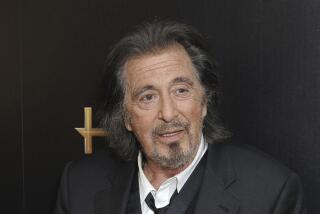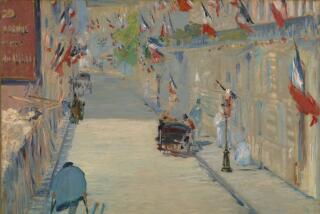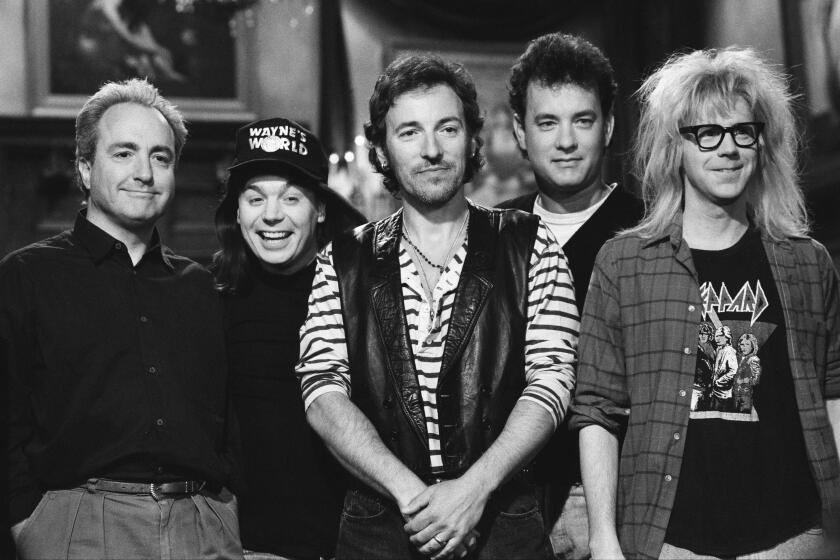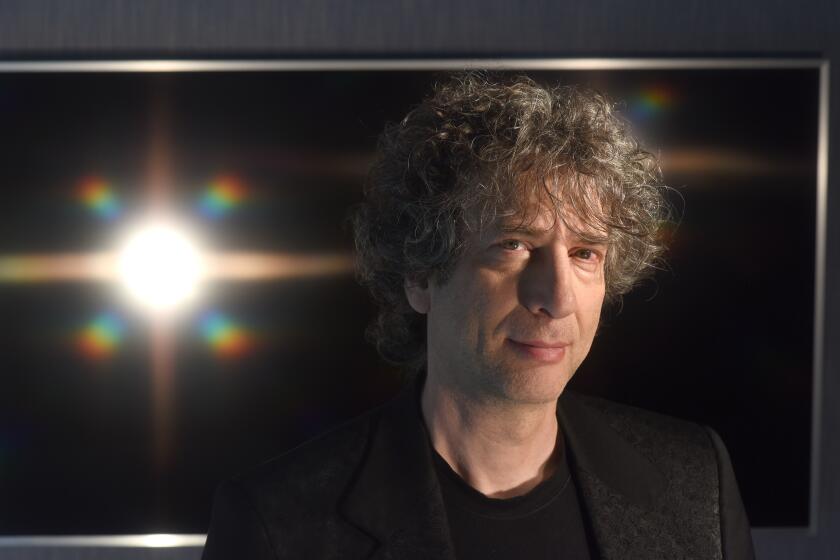Drawing a New Picture of Picasso
- Share via
Six years ago, when the first volume of John Richardson’s magnum opus, “A Life of Picasso,” was published, his effort was received with high praise.
“The definitive life of the artist,” Roger Kimball wrote in the Wall Street Journal. “A major event,” said Hilton Kramer in the Washington Post. In his review for the New York Review of Books, Jack Flam judged Richardson’s work “so absorbing and stimulating, so detailed and so evenhanded, that it should remain the standard biography for many years to come.”
The first volume ended in 1906, when the 25-year-old artist was about to create his seminal painting, “Les Desmoiselles d’Avignon,” and it left much to be said about Picasso, who died in 1973. But late last year, when “A Life of Picasso: Volume II, 1907-1917,” was released, admiration for the author only seemed to increase.
“John Richardson’s second volume on Picasso confirms what his first suggested: that this is a masterpiece in the making, the most illuminating biography yet written on a 20th century artist and the only one that can sustain comparison with Painter on Proust, Ellmann on Joyce, or Edel on Henry James,” said Robert Hughes, art critic of Time magazine.
But then art critic and essayist Adam Gopnik weighed in with a sharply dissenting view in the New Yorker. Bent on exposing “the Picasso cult” as nothing more than “celebrity worship,” Gopnik judged Picasso “an opportunist, a blague [joke] artist, a coward, who sat out two wars” and accused Richardson of trying to turn him into “a conscientious artist, a tender lover, a sound political thinker, a very good boy.”
Richardson’s biography is nothing more than “a social history turned into clubhouse chronicle,” Gopnik said. And while the British-born author may be good at describing art-world politics in “racy and confident” prose, his writing is “lifeless when confronting the pictures.”
Predictably, Gopnik himself was taken to task, in a lengthy essay by James Fenton in the New York Review of Books. Among other rejoinders, Fenton pointed out that Picasso was a pacifist. As a Spaniard living in France, he was not required to fight for his adopted country during World War I, and he was in his late 50s in 1939, when he could have signed up for active duty in World War II.
*
Richardson, for his part, has taken the hullabaloo in stride. It’s only the latest controversy about a 20th century giant who continues to spark disputes.
Picasso remains a source of fascination partly because “he always saw art as having a magic function and therefore the artist as being a magician,” Richardson said during a recent visit to Los Angeles. “With his charismatic appearance and his charismatic behavior, this has made for enormous public interest.
“He was such a positive force in his own time and it has come across ever since,” the author said. “He’s been demonized, quite undeservedly, but people like artists to be madmen, so that has really worked in his favor.”
But being perpetually in the limelight makes him a challenging subject. “The trouble with writing about Picasso is, whatever you say, the reverse is also true,” Richardson said.
“All right, he could be a monster. He could equally be, and more often was, something of an angel. He was by nature very generous; but he could be very stingy, particularly with people who were very close to him, as a means of manipulating them. He always denied having any religious feelings, but his work is filled with religious references, with an assumption of sacred powers.
“So when somebody writes a book about him as a misogynist or another sort of monster, it makes no sense without the opposite being presented,” Richardson said, referring to Arianna Stassinopoulos Huffington’s controversial 1988 biography “Picasso, Creator and Destroyer.”
*
Feminists raise the issue of misogyny, he said. “My line about that is that he was born in Andalusia in 1881, the part of the world that invented misogyny. What is surprising is that he wasn’t more of a misogynist.
“It’s absurd to judge somebody of another culture and another time by the standards of today. Rembrandt was a misogynist, but it’s not a complaint we make about him. I don’t know why it should be made so much about Picasso. He could be a demon, but he could also be tender and compassionate.”
In the case of Gopnik, Richardson said, “everybody knew he was gunning for Picasso.”
“But the only person I feel rather sore about is Tina Brown, the editor of the New Yorker, who was knowingly setting her pit bull on a friend and contributor. Being a responsible editor, she must have known exactly what line he was going to take. I think it did the magazine much more harm than it did me.
“People in the publishing world see it as being an attempt by Tina Brown of the New Yorker and her husband, Harry Evans of Random House, which is my publisher, to counter criticism in the press that they were in cahoots--that Random House writers got better treatment from the New Yorker than other writers--and I was the fall guy,” Richardson said. “I’m not saying this is true, but this is what I have been told. Also, let’s face it, the New Yorker has not been an enormous success. And controversy is Tina’s way of trying to boost circulation.”
Richardson’s friendship with Picasso dates back to the 1950s, when the author shared a house in Provence with Douglas Cooper, an English collector who was an old friend of the artist. At the time, Picasso had a reputation as a jokester because he had “to cope with a lot of importunate people who came for favors and seldom spoke his languages. He would mime, do a little turn, crack jokes, put on a funny hat. But it was just a way of diffusing embarrassment and social difficulties. In private life, he was anything but a clown,” he said.
“I think what people don’t realize was how approachable he was, how wildly funny, how warm, how crotchety he could sometimes be, and how infinitely charming. He was tremendously affectionate and never pretentious.” Richardson has titled his project “A Life of Picasso” because various heirs have blocked access to a few sources of material--primarily papers of the artist’s parents, secretary and mistresses. But he is writing the closest thing possible to a definitive biography.
Its enormous scope might appear to be his biggest challenge, but Richardson said the cost is a more pressing problem. “This is not a money-making project. I’m going to have to get it funded. I can’t afford to go on with it as it is,” he said.
He has depended heavily on the research and fact-checking of his collaborator, Marilyn McCully, and her husband, Michael Raeburn, who handles illustration, layout, typesetting and technical details. Richardson also employs an assistant in France to track down people who control access and publication rights to letters. Such help is expensive. So are the costs of gaining permission to publish materials controlled by Picasso’s heirs.
“I’m 73,” Richardson said. “The first volume took six years; the second took five years. With any luck, the next will take four years and maybe I can just make it on the last one. The second one took so much out of me, that I’m doing a memoir. I want to write about my life in France in the ‘50s with Picasso and Braque and Cocteau and Kahnweiler and Leger, the world around Picasso.
“I thought it would be fun to write about what these people were really like, to have as friends, and to do something very informal. I thought it was going to be a breather, but it’s not turning out that way. Whatever you write is exhausting.”
More to Read
Sign up for our Book Club newsletter
Get the latest news, events and more from the Los Angeles Times Book Club, and help us get L.A. reading and talking.
You may occasionally receive promotional content from the Los Angeles Times.










